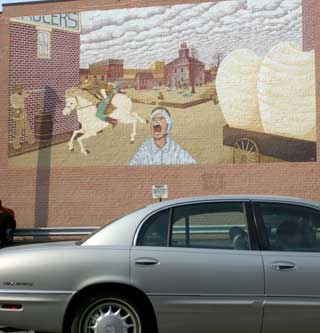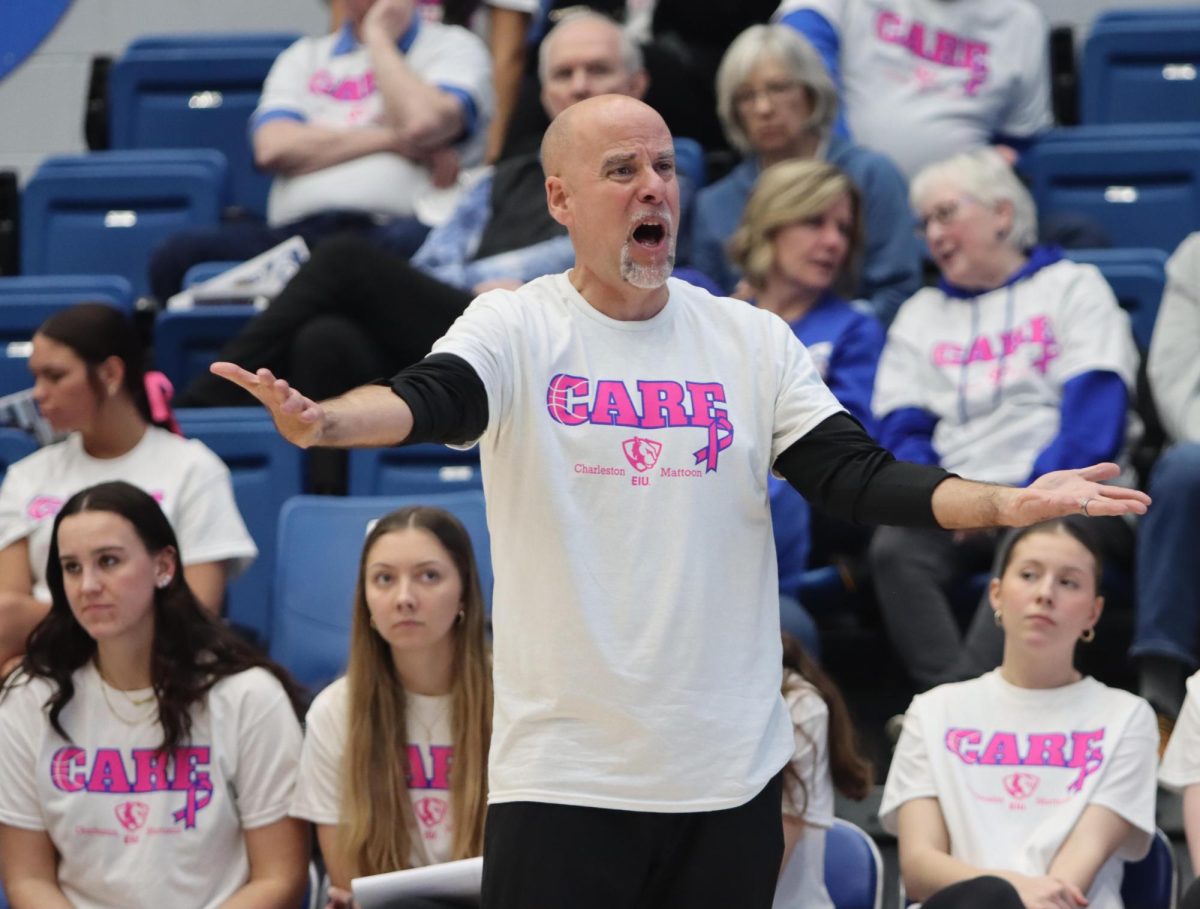Mural depicts Civil War riot
On March 28, 1864, the Charleston Square was the site of a drunken riot.
The riot is portrayed by a mural on the Charleston Square, but many Charleston citizens know nothing about the event.
Michael Kleen, a history graduate student, said this lack of knowledge may be because many people do not have the opportunity to learn much about their own state’s history while in school.
“People tend not to care about local history that much,” Kleen said. “There is just a lack of interest.”
Kleen has been researching the Charleston Copperhead Riot for about three years and believes it is an important part of Charleston’s history. He said even though the riot occurred almost 140 years ago, its roots were in partisanship – an issue still prevalent today.
“People were not open to debate or discussing issues with one another,” he said. “They felt like one side couldn’t have their grievances heard. As soon as that started, people picked up weapons. Today, with so much partisanship, this should serve as a warning that this could happen if we’re not careful.”
Kleen said before and during the Civil War, partisanship was huge in Illinois. The state was basically split in half, with Northern Illinois being heavily Republican and Southern Illinois mostly Democrat. This caused a great amount of tension within the state.
In 1862, Democrats took over the state house and started passing legislation that obscured the war effort. They tried to pass resolutions against the war and tried to make it difficult for people to register for the draft.
The Republican governor at the time found a loophole in a law that allowed him to decide how long to send the legislature on a recess. After his discovery, the governor decided to send the legislature on a two-year recess. Kleen said this allowed the governor to basically rule the state like a dictator.
Democrats who wanted peace with the south and wanted to restore the Union to the state it was in before the war, realized there was not much they could do, since the legislature had been disbanded.
Democrats decided to arm themselves and start performing drills because they figured the opposition would come for them any day.
On March 28, 1864, a Democrat was scheduled to speak in Charleston. However, because a unit of Union soldiers was on leave, the speaker decided to cancel his appearance at the last minute, for fear that his speech would stir up trouble.
People were not aware of the cancellation, so they showed up anyway. Among these people was a group of Copperheads.
The Copperheads, also known as Peace Democrats, were a group of Democrats who opposed the Civil War and wanted to make immediate peace with the South. The Peace Democrats were called “Copperheads” by Republicans because of the copper coins they wore as badges.
The Copperheads showed up to the town square with a wagon full of guns, determined to get the Union soldiers out of Charleston, Kleen said.
People in the square started shouting at one another, many of them drunk. The Union soldiers accused the Copperheads of disloyalty while the Copperheads insulted and threatened the Union soldiers.
Kleen said everything erupted when a soldier bumped into a Copperhead. The soldier asked if there were any Copperheads around, and the man replied, “Yes, I am one.”
The Copperhead then drew his pistol and shot the Union soldier. Everyone started fighting.
“Basically the Copperheads grabbed all their guns and mowed the soldiers down,” Kleen said. “The whole fight probably didn’t last longer than five minutes.”
After the riot, things calmed down in Charleston.
The following summer, it was obvious the South would lose the Civil War.
Kleen said he thinks some people do not like to talk about the riot because there is an element of racism involved.
“There were laws on the books that prevented the slave trade in Illinois,” Kleen said. “They didn’t want black people coming to Illinois and competing with their labor.”
Kleen said Copperheads oftentimes called Republicans “Black Republicans” because the Copperheads thought they wanted to “Africanize the north.”
When he first saw the mural in the town square, Kleen was not even aware of what it was. His curiosity led him to research the topic. He has written several papers and may be writing a book for the SIU Press on Copperheadism.
On October 19, Kleen will be presenting one of his papers at a history conference in Springfield.
Charleston special events and tourism supervisor Karen Petersen said she believes the mural portraying the riot not only helps to educate locals, but it also helps some local businesses by attracting visitors.
“It draws people to the square,” Petersen said. “The murals help people appreciate where Charleston was and where they are today. It paints the town’s history.”
Mural depicts Civil War riot

A car moves past the mural painted on the corner of Jackson Avenue and Sixth Street. The mural depicts a scene from a massacre that took place in Charleston during the Civil War. Tresier Williams/The Daily Eastern News












































